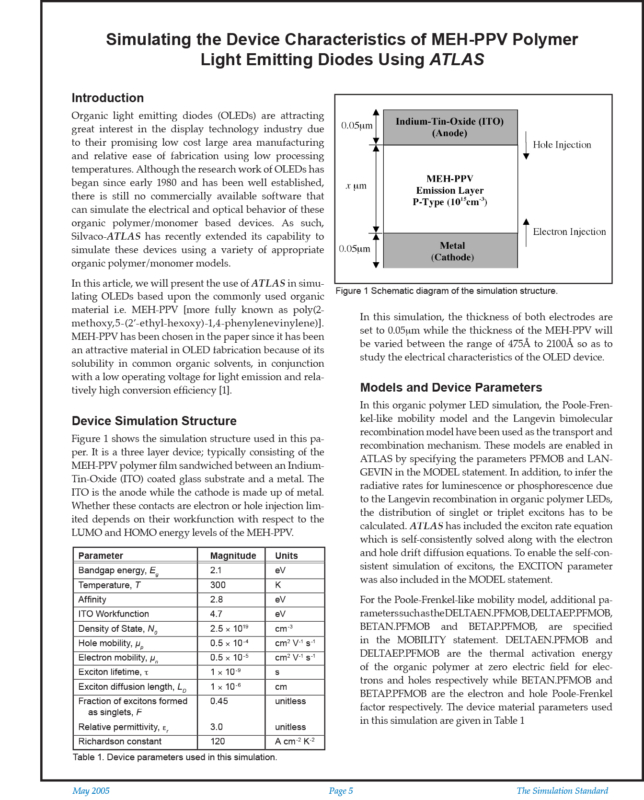Simulating the Device Characteristics of MEH-PPV Polymer Light Emitting Diodes Using Atlas
Introduction
Organic light emitting diodes (OLEDs) are attracting great interest in the display technology industry due to their promising low cost large area manufacturing and relative ease of fabrication using low processing temperatures. Although the research work of OLEDs has began since early 1980 and has been well established, there is still no commercially available software that can simulate the electrical and optical behavior of these organic polymer/monomer based devices. As such, Silvaco-ATLAS has recently extended its capability to simulate these devices using a variety of appropriate organic polymer/monomer models.
In this article, we will present the use of ATLAS in simulating OLEDs based upon the commonly used organic material i.e. MEH-PPV [more fully known as poly(2-methoxy,5-(2’-ethyl-hexoxy)-1,4-phenylenevinylene)]. MEH-PPV has been chosen in the paper since it has been an attractive material in OLED fabrication because of its solubility in common organic solvents, in conjunction with a low operating voltage for light emission and relatively high conversion efficiency [1].
Device Simulation Structure
Figure 1 shows the simulation structure used in this paper. It is a three layer device; typically consisting of the MEH-PPV polymer film sandwiched between an Indium-Tin-Oxide (ITO) coated glass substrate and a metal. The ITO is the anode while the cathode is made up of metal. Whether these contacts are electron or hole injection limited depends on their workfunction with respect to the LUMO and HOMO energy levels of the MEH-PPV.
In this simulation, the thickness of both electrodes are set to 0.05mm while the thickness of the MEH-PPV will be varied between the range of 475Å to 2100Å so as to study the electrical characteristics of the OLED device.
Models and Device Parameters
In this organic polymer LED simulation, the Poole-Frenkel-like mobility model and the Langevin bimolecular recombination model have been used as the transport and recombination mechanism. These models are enabled in ATLAS by specifying the parameters PFMOB and LANGEVIN in the MODEL statement. In addition, to infer the radiative rates for luminescence or phosphorescence due to the Langevin recombination in organic polymer LEDs, the distribution of singlet or triplet excitons has to be calculated. ATLAS has included the exciton rate equation which is self-consistently solved along with the electron and hole drift diffusion equations. To enable the self-consistent simulation of excitons, the EXCITON parameter was also included in the MODEL statement.



